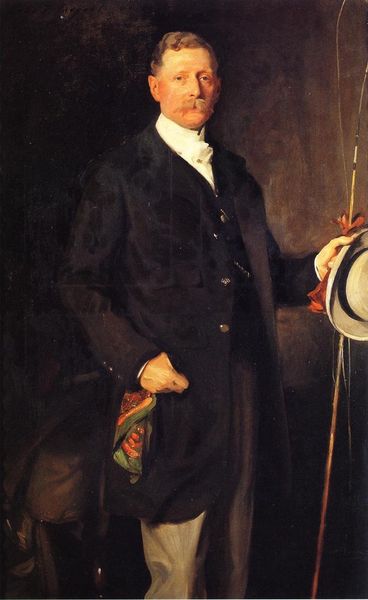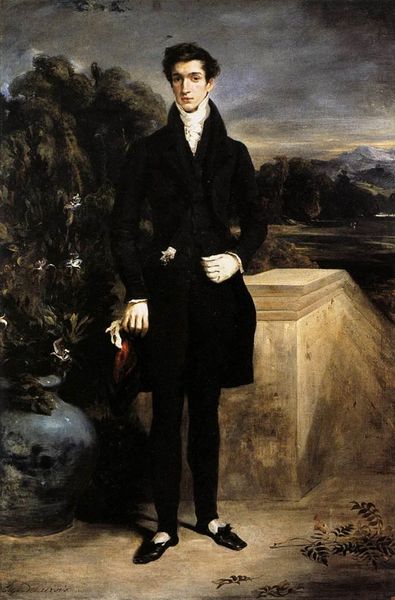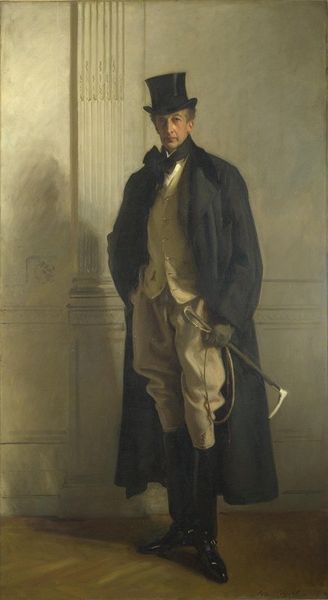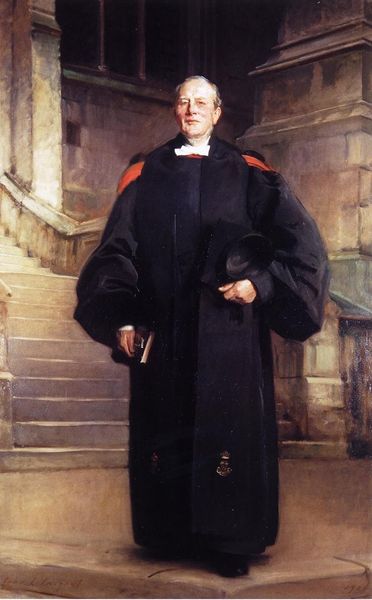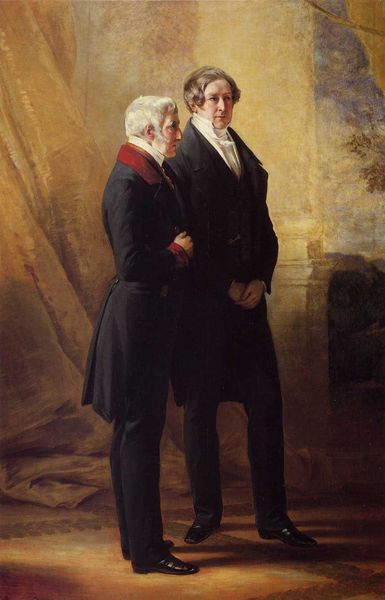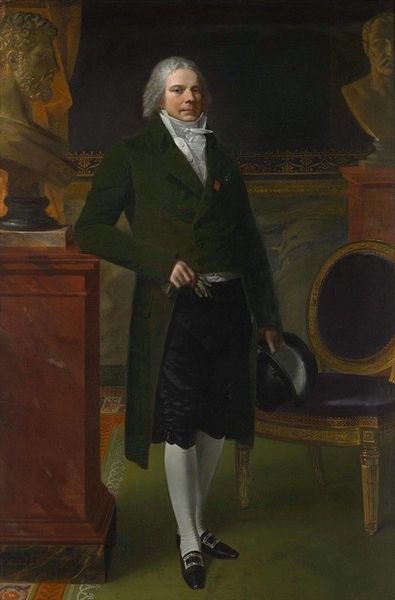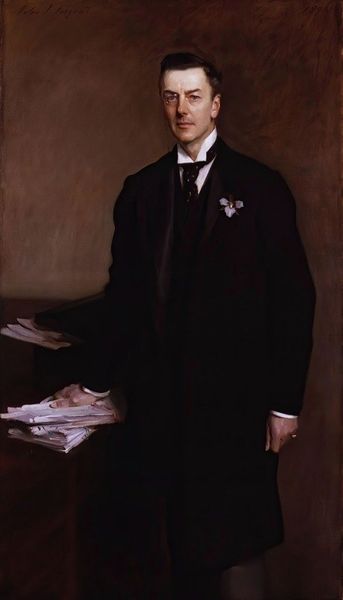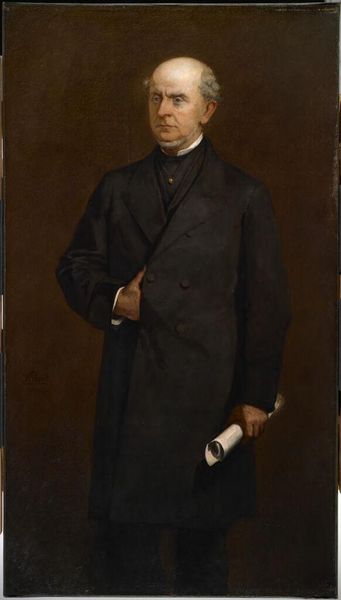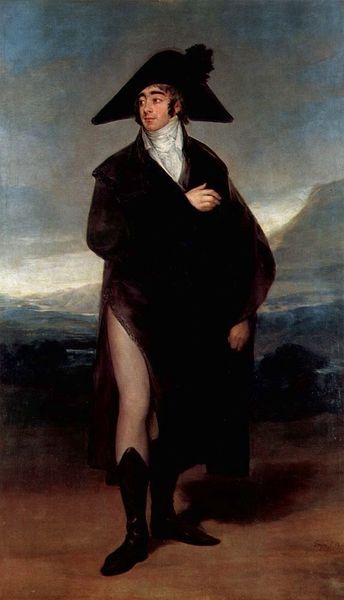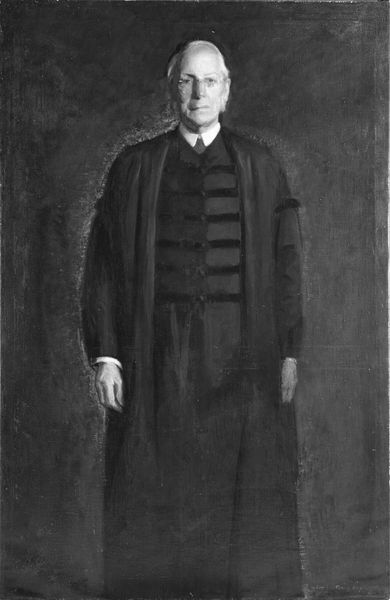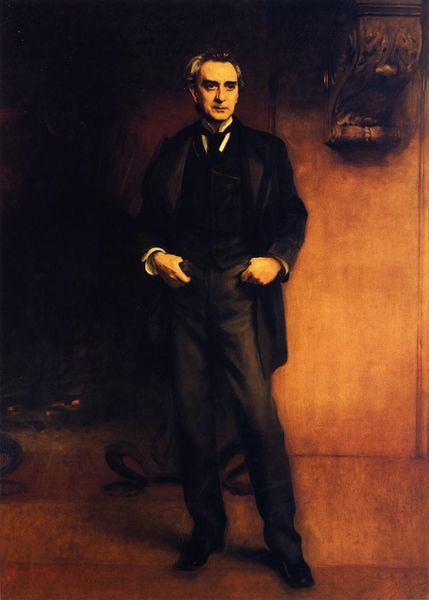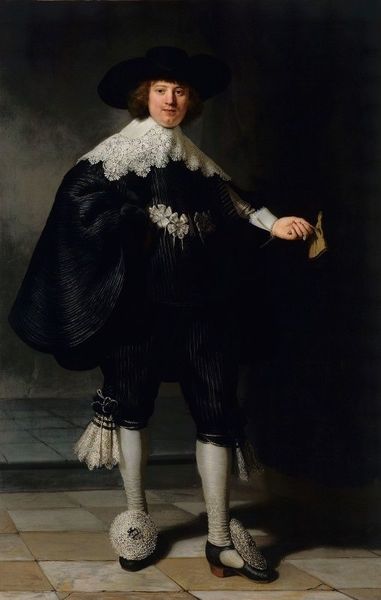
painting, oil-paint
#
portrait
#
painting
#
oil-paint
#
romanticism
#
genre-painting
#
academic-art
Copyright: Public domain
Editor: So, here we have a portrait of Prince Albert by Franz Xaver Winterhalter. It’s an oil painting, and honestly, it strikes me as very imposing. All that heavy fabric and the official decorations – it feels like it's emphasizing power. What do you see in this piece? Curator: More than power, I see a performance *of* power deeply embedded in its historical context. Consider the Romantic era's obsession with ideals of masculinity intertwined with governance and social roles. Albert, in this representation, becomes a symbol of Victorian values: duty, intellect, and domesticity, all carefully constructed. What does the pose itself tell us? Editor: I suppose the relaxed posture could suggest a man secure in his position, but the lavish details seem like he’s trying to make a point. Curator: Precisely. The decorations, the setting, they are visual cues aimed at conveying legitimacy. Winterhalter was a master of courtly portraiture, and he used that expertise to project the image Albert and Victoria wished to cultivate. Now think about the lack of specificity: what does this elision of concrete historical happenings tell us about the function of portraits of royalty in a colonial, industrialising era? Editor: So it’s not just about Albert as a person, but about Albert as a representative of the monarchy and its values. A kind of symbolic representation of Victorian ideals. Curator: Exactly! And by understanding this we can see how artworks become tools within larger social and political systems, always negotiating with shifting cultural norms. Editor: I see, thank you! It’s so much more complex than just a portrait. Curator: Indeed. Looking critically helps us reveal layers of meaning embedded in the seemingly straightforward.
Comments
No comments
Be the first to comment and join the conversation on the ultimate creative platform.
